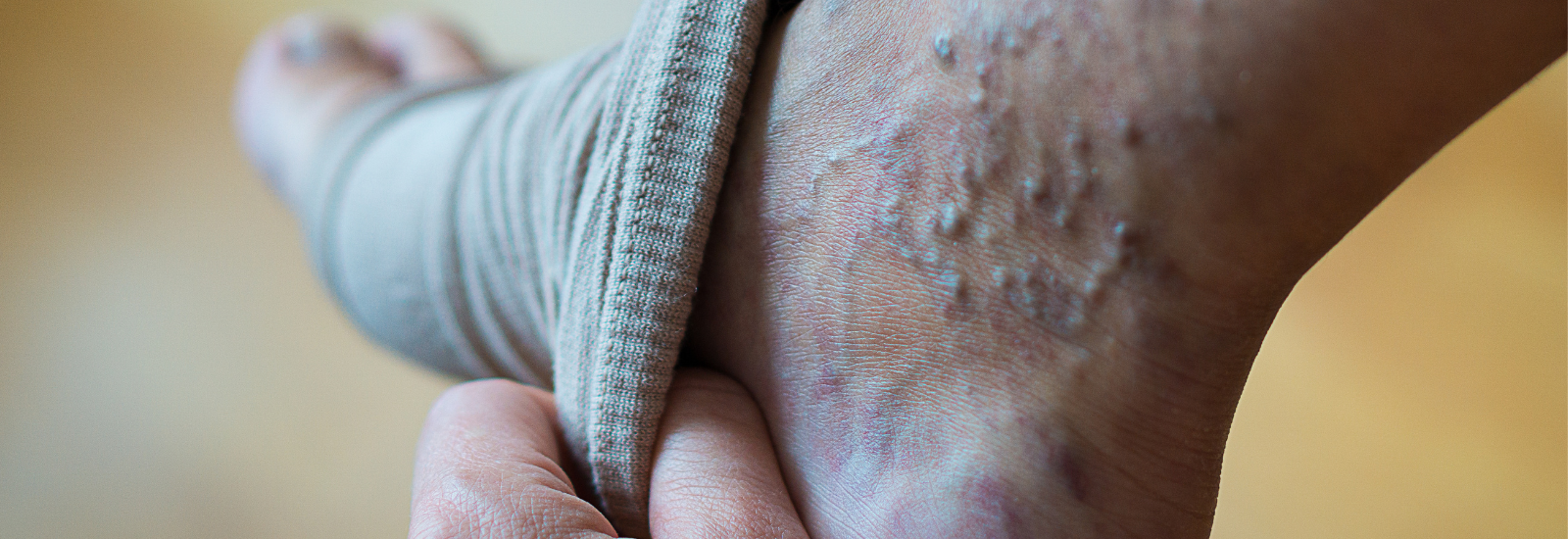
Varicose veins: When to worry and why
Varicose veins affect more than 30
million adults in the United States, making them very common. Women are more
likely to be diagnosed with varicose veins, but men may get them, too. For most people, varicose veins are
painless and not dangerous. However, they could lead to significant and
potentially life-threatening health problems for some. Learning more about
varicose veins and knowing the signs and symptoms can help you stay healthy,
active, and pain-free.
What are varicose veins?
Veins move blood toward the heart,
using small valves inside them to keep the flow from moving backward. If these
valves are damaged, weak, or don't work correctly, blood can collect (or pool)
in the veins, causing varicose veins. These usually appear as swollen and
twisted bright blue, purple, or red lines under the skin.
Severe varicose veins may look like
twisted ropes and often cause noticeable bulges on the skin. They're mostly
found on the outer thighs, calves, or inside part of the legs near the ankles,
but they can also develop on the inner thigh, around the pelvis, or on the
buttocks during pregnancy.
Risk factors for varicose veins
Anyone can get varicose veins, but
there are risk factors that make developing them more likely:
- A family or personal history of spider veins or varicose veins
- Being older
- Being overweight
- Having a history of blood clots in your legs
- Hormonal changes due to birth control, hormone replacement therapy, or menopause
- Pregnancy
When to see a vascular doctor about varicose veins
Unless your varicose veins cause a
lot of pain, it can be challenging to know when to see a medical provider. Most
varicose veins caused by pregnancy will typically go away within a year after
delivery without treatment. Varicose veins caused by other factors may worsen
over time without treatment.
Varicose veins without pain or other
symptoms are usually not harmful, but some people still choose to have them
treated because of the way the veins look. There are, however, clear signs your
varicose veins might be a serious health concern.
It's time to request an appointment with a vascular doctor (a doctor who
specializes in health issues related to veins and arteries) if you notice:
- A feeling of heaviness in your legs
- A rash near the varicose veins
- Bleeding from or near the varicose veins
- Changes in your skin color or texture near the varicose veins
- One or more open sores near the varicose veins that do not heal easily
- Pain in your legs or calves that intensifies after sitting or standing for a long time
- Skin around varicose veins that becomes dry, scaly, hardened, cracked, or irritated
- Soreness, achiness, tenderness, tingling, or throbbing in your legs
- Sudden swelling, redness, warmth, or increased pain around the varicose veins or a sudden fever
- Swelling in your legs
- Symptoms that don't improve or get worse with at-home treatments, such as elevating your legs, getting enough exercise, or wearing compression stockings
- Symptoms that limit you from doing your daily activities
Treatment options for varicose veins
Varicose veins can't be prevented,
but the following tips can help improve blood flow, keep varicose veins from
worsening, and decrease uncomfortable symptoms:
- Avoid standing or sitting for long periods.
- Don't wear high-heeled shoes.
- Don't cross your legs when you sit.
- Exercise regularly.
- If you smoke, quit.
- Maintain a healthy weight.
- Put your feet up on a stool or ottoman when you sit and elevate your feet at least six inches above your heart when lying down.
- Wear compression stockings if recommended by your provider to help increase blood flow. Your provider can help you find the right type and size for you.
There are also a variety of medical treatments to
shrink or remove varicose veins. The best option for you will depend on the severity of your
condition and other personal health factors.
Available treatment options include:
- Endovenous thermal
ablation:
Uses radiofrequency or lasers to heat and shrink varicose veins
- Phlebectomy: Surgical removal of
varicose veins
- Sclerotherapy: A minimally invasive
procedure in which a solution injected into the varicose veins causes them to
shrink
- Venaseal: A specialized type of
medical adhesive injected into varicose veins to close them up
What can happen if varicose veins go untreated
It is essential to get treatment if
your varicose veins cause pain or if you have any other potentially serious
signs or symptoms. Varicose veins left untreated may lead to:
- Deep vein thrombosis (DVT): A type of blood clot
usually found in the leg, DVTs may come loose and travel to the lungs, heart,
or brain where they can be life-threatening.
- Sores and skin ulcers: Sores can cause pain and
may need special care to heal and prevent infection.
- Superficial thrombophlebitis: This type of clot forms just beneath the skin and causes inflammation (swelling, warmth, redness, and pain) in the veins.
If you're dealing with painful
varicose veins, the Reid Vein Center is here for you. Our vein specialists use
the most effective, up-to-date treatments. Request an appointment
online or call us at (765)983-3358.

